#jean baptiste belley
Explore tagged Tumblr posts
Text
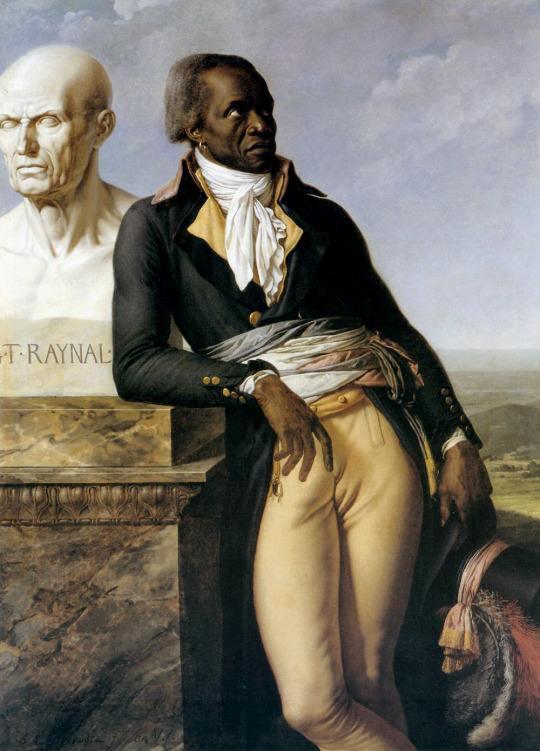
Portrait of Citizen Jean-Baptiste Belley, Ex-Representative of the Colonies (1797) by Anne-Louis Girodet de Roussy-Trioson
#Portrait of Citizen Jean-Baptiste Belley#Anne-Louis Girodet de Roussy-Trioson#1797#French Revolution#Haitan Revolution#art#painting#Miss Cromwell#1700s#portrait
16 notes
·
View notes
Text
I bought this paint-by-numbers kit because I went from “that’s the stupidest thing I’ve seen” to “and it brings me so much joy to look at it” in the space of about 3 minutes

how my brain picks a new favorite character who sucks


104K notes
·
View notes
Text
Paradoxes in the Revolutions of 1792 and the Revolt of 1870
Warning: There are some text elements in the treatment of Algerian deportees in New Caledonia that are shocking. So refrain from reading if you are not ready.
Do you share my impression of certain aspects of the different revolutions or uprisings in France? I mean, the French Revolution, at its most left-leaning during the government of Year II, was very conservative regarding property rights. Regarding property rights, the entire political class was very timid, even the far left like the Enragés and the Hébertists, who were more focused on economic issues like taxation. However, some, like Momoro, apparently began to consider land redistribution, such as sharing large farms, but without a clear plan (and far from any notion of collectivization of agriculture). There was a concession made by the Convention on property rights with the Ventôse Laws, perhaps? And it is true that on certain economic issues, there were conservative elements, even though during the journée of September 5, 1793, the sans-culottes managed to extract the maximum.
Even Gracchus Babeuf, who seems to advocate for collective exploitation, primarily talks about agriculture. I'm not saying there weren't progressive aspects. There were, like the introduction of universal suffrage, for example, and many other aspects, such as the fact that deputies like Louis Michel le Peletier defended the project to implement free, mixed, secular, and compulsory education, supported by several deputies, including Robespierre (it's sad that this was only adopted years later by a man who, opportunistically, in my opinion, lacked the integrity of Le Peletier, who seems to have been opposed to most of the revolutionaries of 1793-1794 and who unjustly reaped all the credit for this project—I’m talking about Jules Ferry, sorry to the fans of this character). But it must be acknowledged that there were also conservative aspects.
Paradoxically, the Convention proved to be extremely progressive compared to so many others regarding the colonies. The abbé Raynal, so conservative on property rights, apparently called Toussaint Louverture the "Black Spartacus." Sonthonax, considered a Brissotin and advocate of gradual abolition of slavery, did not hesitate to oppose the colonists and slaveholders (just like the Convention) by granting full citizenship to the revolting slaves of 1791 barely a year later. There was the dissolution of the colonial assembly, and important and well-known revolutionaries enthusiastically supported the revolts of the colonized, even their independence, like Deputy Marat or the prosecutor of the Commune, Chaumette, among many others. Black deputies were elected, such as Jean-Baptiste Belley. Some Black people managed to attain high ranks. The overly hostile colonists could be expelled, and there was the dismissal of Governor Philippe Blanchelande, who had distinguished himself by his fierce repression of the slave revolt. During his execution in 1793, Rosalie Julien, one of the important women of the revolution, wrote, "He made the blood of Blacks and patriots flow in streams." It is important to note that she equated the attack on Blacks with that on people considered patriots, a more common position at that time than one might think. I know we must be careful about anachronisms, but I feel that aside from a distrust of foreigners (though this did not prevent people like Fleuriot Lescot or Claude François Lazowski, who came from a Polish family, from holding important positions), the French political class was less racist in 1794 than in 1870 or during the mid-20th century, especially concerning the colonies and overseas territories. There was a regrettable step backward (honestly, can you imagine the Convention of Year II, or the Jacobin or Cordelier Clubs tolerating even the idea of a horrible human zoo as we saw in 1906? I can't). Of course, there were people who supported slavery at that time, like Cloots (a very questionable and paradoxical figure of the revolution, considered close to the Hébertists, yet a very wealthy and conservative man regarding property rights, who had pro-slavery thoughts and was a fervent supporter of colonization because his family and he profited from it, even though he supposedly wanted the Revolution to extend beyond borders according to his own words; according to historian Antoine Resche, he called himself the orator of the human race—very complicated as a revolutionary).
For those who think of the left envisioned by Karl Marx, we're still far from it. Here's an excerpt from The Holy Family: "The revolutionary movement that began in 1789 with the social circle, which, in the midst of its course, had as its main representatives Leclerc and Roux and eventually succumbed temporarily with Babeuf's conspiracy, had sown the seeds of the communist idea, which Babeuf's friend, Buonarroti, reintroduced in France after the revolution of 1830. This idea, developed consistently, is the idea of the new state of the world." Moreover, I have encountered communists who heavily criticize the revolutionaries, except for some ultra-revolutionary members (a few have even added Marat to the list of characters they appreciate, though they know he was not an ultra-revolutionary) by explaining that, in their view, the second revolution from 1792 until the fall of the last Montagnards like Charles Gilbert Romme remained bourgeois, though less so than the one of 1789.

Abbé Raynal
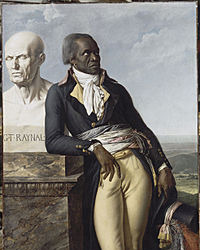
Jean Baptiste Belley
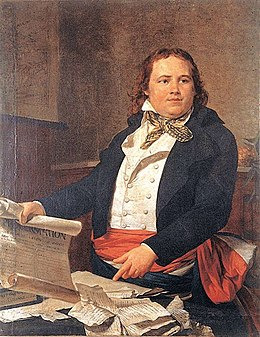
Léger-Félicité Sonthonax
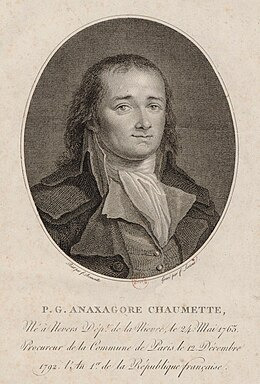
Pierre-Gaspard Chaumette
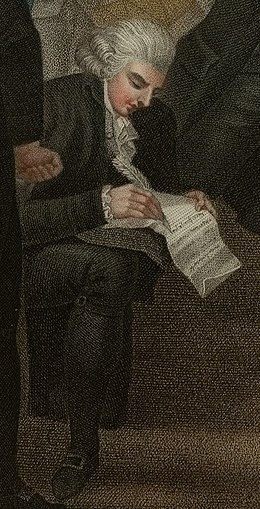
Jacques Roux
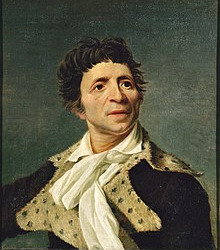
Jean Paul Marat
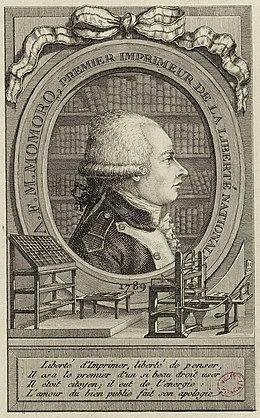
Antoine-François Momoro
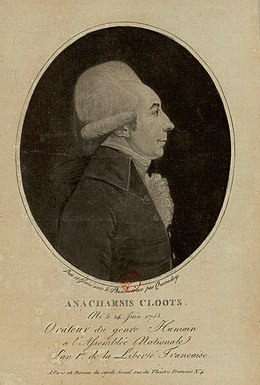
Anacharsis Cloots
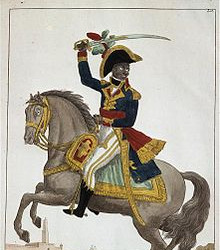
Toussaint Louverture
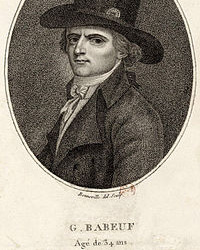
Gracchus Babeuf
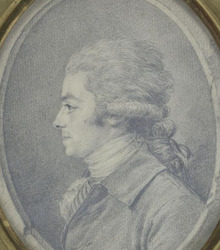
Jean-Baptiste Edmond Fleuriot-Lescot

Rosalie Jullien
On the other hand, we have the Paris Commune uprising of 1870, which ended in horrific repression (some estimate that 10,000 people died within a week in the city of Paris).
The origins of this Paris Commune are quite complex to explain, involving the fall of Napoleon III's dictatorship, Bazaine's lamentable behavior, the fact that the new regime forming a republic was composed of monarchists while Paris was predominantly republican, the new regime's abolition of wages, which was one of the only sources of income for workers, and so on.
These Paris communards represented various leftist movements, including the Blanquists, named after Auguste Blanqui (a small anecdote: the composer of "The Internationale" was a communard named Eugène Pottier), anarchists, Proudhonians, as well as centralists like Delescluze (some might even call them Jacobins, though I am not well-informed about that), and even collectivists. The Paris Commune marked a significant shift to the left (albeit briefly). I will mention four measures passed by this government: the abolition of night work (at least for bakers), the separation of Church and State, free, secular, and compulsory education, and the elimination of distinctions between legitimate and illegitimate children.
The repression was atrocious, with death sentences raining down (one of the key figures in the repression, alongside Thiers, was Jules Ferry), and deportations to New Caledonia as well.
It is here that the communards (or at least a significant number of them) were less progressive on certain issues than the main actors of the Convention of Year II. Except for individuals like Louise Michel or Charles Malato, the son of deported communards who followed them to Nouméa, most of the communards did not support the Kanaks at all. There was a lingering racist attitude towards these colonized people, who were also fighting against the injustices imposed on them by the French government. Some even participated in the repression against the Kanaks following the Great Kanak Revolt of 1878, whose main leaders were Atai, chief of Komalé, and Cavio, chief of Nékpi, among others.
I have the impression that the communards behaved similarly toward the deported Algerians. Indeed, in 1869, a significant new insurrection broke out in Algeria, spreading from Kabylie, the Aurès, and towards Algiers, and other territories (the war against France began in 1830, with the defeat of Emir Abdelkader in 1847, the division of three departments in 1848, and the continued Algerian resistance against the establishment of the French colony, notably led by Lalla Fatma N’Soumer and Cherif Boubaghla, though Fatma N'Soumer was captured by the French army in 1857 and died in captivity in 1863 at the age of 33, and Cherif Boubaghla died in combat in 1854; other uprisings lasted until 1870, and one of the most significant was that named Mokrani revolt ).
The insurrection was defeated after fierce fighting, with death sentences raining down, the expulsion of tribes, the sequestration of property, and deportations as well, with around 60 deportees dying from the conditions of deportation. Louise Michel described their arrival in these terms: "We saw them arrive in their great white burnouses, the Arabs deported for having also risen up against oppression. These Orientals, imprisoned far from their tents and flocks, were simple and just, and could not understand the way they had been treated."
They had even fewer privileges than the deported communards. According to some sources, they were chained with red-hot irons, subjected to more intense forced labor, and had to eat soup from the shoes of the jailers. They were forcibly separated from their wives, leading some to marry Kanaks, while others married communard women. It is true that some communards, like Louise Michel and Jean Allemane, campaigned for their amnesty. There were escapes by Algerians, some of whom were recaptured. One of the most famous was Azziz El Haddad, who died in the home of his friend the communard and former deportee Eugène Mourot on August 22, 1895, in Paris. Mourot was also opposed to the colonization of Algeria. A collection by the communards against colonization ensured that his body was repatriated to Algeria.
However, while some deported communards supported them, it should not be forgotten that other communards were driven by colonialist mindsets. It is also interesting to learn more about the Commune of Algiers, proclaimed by Alexandre Lambert, among others. Some European insurgents supported a fraternal republic, but one that excluded Algerian insurgents. Alexandre Lambert, who was killed during the Bloody Week, published a newspaper called Le Colon. The title is quite telling.
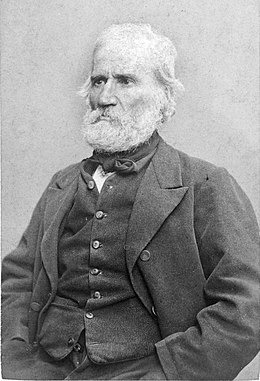
Auguste Blanqui
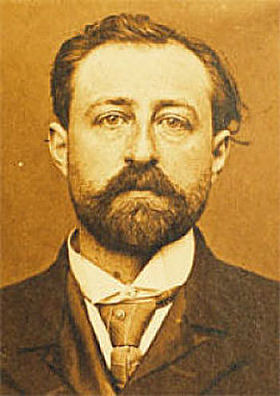
Charles Malato
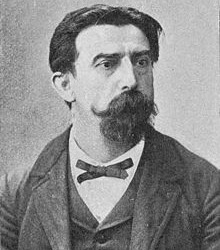
Jean Allemane
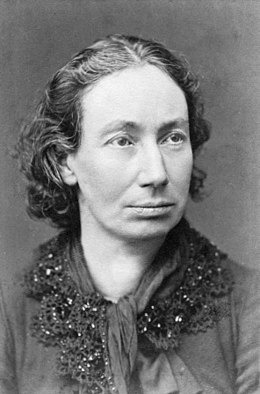
Louise Michel
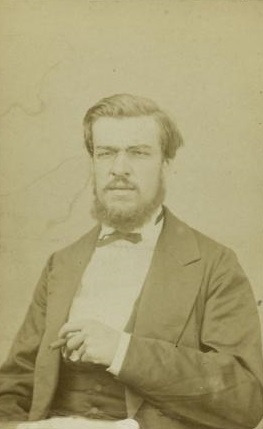
Eugène Mourot
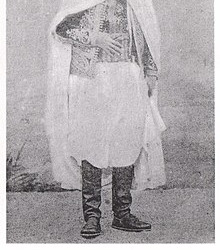
Bou-Mezrag El-Mokrani, brother of Mohamed El-Mokrani

Cheikh El Haddad father of Aziz el Haddad and Cheikh M'hand
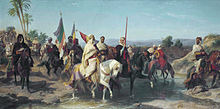
Chérif Boubaghla and Lalla Fatma N'Soumer (Henri Félix Emmanuel Philippoteaux, 1866) alleged portraits
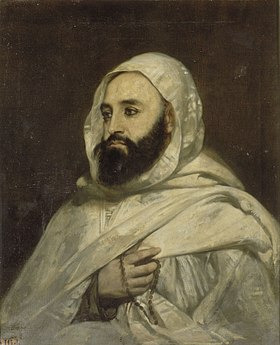
Émir Abdelkader

Ataï
And so, this is the paradox of these two French "revolutionary groups" from 1792-1794, and the group of the Communards from 1870. The first group, still very timid on certain social rights such as property rights (even within the extreme left), was nevertheless much more committed to advocating for more rights among men of different colors, with some even going further by supporting the ideas of revolts by the colonized. Moreover, the colonizers were much less listened to after a certain point in time.
In contrast, during the Paris Commune, while there were more progressive ideas and people who were less conservative about property rights (after all, there was representation from collectivists), they were much less engaged in supporting the colonized and at times even approved of colonial repressions.
Sources: Jean Marc Schiappa Alain Decaux Antoine Resche Mehdi Lallaoui - Kabyles du Pacifique
P.S.: I'm not trying to hand out praise or criticism regarding property rights. I'm merely attempting to make an observation. In fact, I might even be wrong on certain points, so I invite you to correct me. And I don't intend to bash the Paris Communards, many of whom suffered or gave their lives for an ideal Republic, and whose horrific repression we don't often discuss. But it's important to acknowledge everything, including their mistakes. Perhaps one day I should address the question of the French left as a whole, from 1789 to 1962, concerning colonization.
#frev#french revolution#france#commune#Paris Commune#1700s#1800s#algeria#new caledonia#colonization#Kanaks#marat#louise michel#Blanqui#babeuf#sonthonax#toussaint louverture#third republic
22 notes
·
View notes
Text




who's ready for some regency shenanigans :D
we have the season and the ton, except it's hunters and hounds (who are… not Not werewolves) trying to find a bond partner to go fight the darkness
bc it has eyes, and claws, and teeth :>
saar's a hunter who looks like she should be a hound, solas is a hound who looks like he should be a hunter if not a bureaucrat, they're gonna court each other in probably v unhinged ways
the rules are different, but there are still So Many Rules bc this IS regency
also fantasy mary anning is here. she wants to study eldritch monster corpses, but to do that you need access to the combat zone, and while she has a dog, she doesn't have a hound nor is she a hunter. so saar said, not to worry, i'll get a bonded hound and then We're In
to which solas said, you're both insane
[first image is based on the portrait of jean-baptiste belley by girodet]
#drawing saar fully human is. An Experience. cherish that one picture with white sclera bc it's the only one you're getting#v much a style experiment with that second picture but i'm really pleased with it!! i basically never do lineless art so this was Wild#art tag#saar gets her own tag#solas#bc like; he IS turning into a wolf here so. close enough#fantasy mary anning#only reason i haven't made a naming language for this project yet is that the urge to draw was stronger#regency wild hunt#regency#regency au#Technically lmao#original art#fanart#continuing to try the image alt text. if anyone's using a screenreader; i'd love to know how that's working out#if it's too much detail; too little; etc
21 notes
·
View notes
Text

Anne-Louis Girodet-Trioson (1767-1824), Portrait de Jean-Baptiste Belley, 1798
9 notes
·
View notes
Text
Je visite Belley
Une nouvelle Vidéo de Tourisme et Découverte France Belley – Ain – Auvergne Rhône Alpes Bienvenue à … Belley. Venez visiter la veille ville, le palais épiscopal, l’hôtel du duc de Savoie, le petit déminaire et la fameuse cathédrale Saint Jean Baptiste. Enjoy ! VOIR D’AUTRES VIDEOS DE L’AIN Abonnez-vous pour ne pas manquer les prochains articles ! Type your email… JE M’ABONNE tourisme…

View On WordPress
0 notes
Photo

NEW on Sartle.com: Jean-Baptiste Belley, member of the National Convention by Girodet at Versailles Meet Jean-Baptiste Belley, the Deputy of Saint Domingue and general badass. Born in Senegal and taken to the French colonies by the slave trade, Belley was enslaved until he bought his freedom after serving in the French army. During the French Revolution, he became a member of the National Convention and is credited with convincing the Convention to abolish slavery. Here he is depicted as a Frenchman, wearing the traditional ruffly shirt, britches and coat look that we’ve all come to love from period romances. You can see his feathers, sash, and hat wrap are color coordinated with the French flag, which is red, white, and blue. But alongside his soldier's uniform, he’s rocking hoops, a clear reference to his unique heritage as a Sengelese-Caribbean man. However, this 1797 portrait was painted in the midst of racial tension after a ruling that black people working in the Republic were citizens, which caused a surge of pro-slavery and anti-black attitudes. As pro-slavery rhetoric increased, so did the circulation of racist science, language, and violence. While many agree that Girodet’s intention here was to portray Belley nobly, as a white man it seems he was unable to portray Belley without falling into some stereotypes. Specifically, that D is poppin. The bulge in his pants and the way his finger gestures to it is a clear break from tradition in portraying male bodies, and also exemplifies the racist sexualization of black men at the time. Follow us on Instagram to see more.
#girodet#18thcentury#frenchart#jeanbaptistebelley#mensfashion#historicalcostume#blackhistory#abolitio#Anne-Louis Girodet de Roussy-Trioson#french art#jean baptiste belley#poc in history#medievalpoc
6 notes
·
View notes
Photo

Today in French and Haitian History - September 24, 1793 -- Jean-Baptiste Belley elected to join special mission to the National Assembly
Jean-Baptiste Belley remains one of the most emblematic figures of the Age of Revolution most notably in the French Caribbean. Born in Africa, Belley was sold into slavery and spent a great portion of his life in servitude. His services to the French army during the American War of Independence helped secure his eventual freedom. In 1793, he was elected in Saint-Domingue to take part of a multiracial delegation put in place to pressure for the abolition of slavery at the National Assembly.
Image: Portrait of Jean-Baptiste Belley by French painter Anne-Louis Girodet de Roussy-Trioson entitled “Portrait of Citizen Jean-Baptiste Belley, Ex-Representative of the Colonies”. Courtesy of: Wikimedia Commons.
#haiti#france#haitian history#French History#french empire#age of revolution#haitian revolution#jean baptiste belley#1793#1790s#18th Century#wikimedia commons#today in history#Anne-Louis Girodet de Roussy-Trioson#art
346 notes
·
View notes
Photo

Jean-Baptiste Belley, by Girodet
I think this is one of the most supremely elegant Revolutionary portraits. And of a remarkable man. The Wikipedia article is a bit strange in places, though, going on about the effect of his tight trousers. It’s actually no different from what one sees in Kiprenskii’s portrait of Evgraf Davydov.
I am more interested in the hat. I love these utterly OTT tricolor plumed hats!
#french revolution#jean-baptiste belley#girodet#18C art#18C menswear#haiti#saint-domingue#black jacobins#afro-caribbean history#18C costume#dashing#elegant#abolitionist#anti-slavery#eye candy
46 notes
·
View notes
Photo

Anne-Louis Girodet Trioson, Portrait of Citizen Jean-Baptiste Belley, 1797
248 notes
·
View notes
Text

Via Masculinity in male portraits Girodet-Trioson, Portrait de Jean-Baptiste Belley (s'appuyant sur un buste de l'abbé Raynal), 1798. Musée de l'Histoire de France, Versailles Thanks to Jerome Picon.
2 notes
·
View notes
Photo

Portrait of Jean-Baptiste Belley by Anne Louis Girodet de Roucy-Trioson fineartamerica.com #frenchhistory #art #artwork #artist #contemporaryart #painting #fineart #artgallery #photography #paintings #design #entrepreneur #fashionguru327 #instagram #fashion #facebook #linkedin #pinterest #twitter #tumblr #whatsapp #branding #graphicdesign #print #logo @fashionguru327 instagram.com/fashionguru327/ Italian et Americaine Haute Couture et Coiffure. (at Cape Town, South Africa) https://www.instagram.com/p/CQ6nd5epE9u/?utm_medium=tumblr
#frenchhistory#art#artwork#artist#contemporaryart#painting#fineart#artgallery#photography#paintings#design#entrepreneur#fashionguru327#instagram#fashion#facebook#linkedin#pinterest#twitter#tumblr#whatsapp#branding#graphicdesign#print#logo
32 notes
·
View notes
Photo

February 4, 1794 France freed French colonies in Caribbean
Jean-Baptiste Belley-Mars, who represented Saint-Domingue in the French National Convention in Paris in 1794, is widely credited with persuading that body to abolish slavery in France and its overseas colonies. Belley-Mars as a boy was kidnapped by slave catchers on the island of Goree near Dakar, Senegal, and shipped off to the French Caribbean colony of Saint-Domingue (now the Republic of Haiti). He purchased his freedom from his owner, enlisted in the military, and served in a contingent of black and mulatto troops called Volunteer Chasseurs that was sent to fight against the British in Georgia during in the American Revolutionary War. Returning to Saint-Domingue, Belley-Mars became a well-to-do planter with a penchant for politics.
News from France in 1789 of the storming of the Bastille set in motion revolution in Saint-Domingue and pitted whites (grands blancs and petits blancs) against black slaves and mulatto freedmen led by Toussaint L’Overture demanding liberty and equality. When in 1793 the Jacobin Léger-Félicité Sonthonax was dispatched to administer the colony, Belley-Mar, now a middle-aged officer, joined him in crushing a rebellion of the whites and opposing L’Overture. As a reward for his loyalty, Belley-Mars was one of three men and the only black person elected to represent the colony at the Convention Nationale in Paris.
As reported in Le Moniteur Officiel, on February 4, 1794, after having their credentials authenicated, the three delegates from Saint-Domingue were welcomed into the hall of the Convention with exuberant applause, hugs, and, as customary in France, kisses on both cheeks. The next morning, Belley-Mars further secured his place in history when he delivered to the Convention a lengthy, emotionally-charged speech which denounced the inhumanity of slavery and demanded its abolition. Carried away by the moment, a white delegate rose to voice his shame and rebuked the nation for the horrors it allowed in the colonies. Then, by acclamation, the Convention voted to end slavery. Belley-Mars, the man of the hour, returned to the rostrum to receive embraces and unrestrained congratulations.
Belley-Mars extented his stay in France, survived the Reign of Terror, and served on the Council of Ancients and the Council of Five Hundred. Before returning home to Haiti in 1797, he posed for a portrait by Anne-Louis Girodet de Roucy-Troison. This portrait, still on display in the chapel of the Palace of Versailles, has best preserved the memory of the former slave and abolitionist leader.
By 1802 when Napoleon Bonaparte sent an army to Saint-Domingue to reestablish slavery and defeat the blacks led by Toussaint L’Ouverture, Belley-Mars, now a constable, was eventually persuaded to oppose the brutal tactics of the French. Because of that opposition, he was forced to return to France, immediately arrested, and imprisoned for at least two years at the notoroius Belle-île Prison. The exact date, place, circumstances, and manner of his death has cannot be determined, but his memory is preserved in a medallion at the Bibliothèque de Nationale de Paris, and his chalk-and-ink portrait sketch by Girodet at the Art Institute of Chicago in Illinois.
15 notes
·
View notes
Note
ah ouais t'appelle les français blancs "autochtones" alors même que tu dois appeler les anti-racistes "indigenistes" lol. c'est bon grandis un peu, c'est juste le toit qui est détruit, c'est pas la premiere fois que cette foutue cathedrale est en rénovation. et puis la mosquée à jerusalemen est bien plus vieille que notre dame. et oui ma grande la civilation ne commence pas avec les blanc euopéens je sais c'est dingue.
Lol... you're the only one saying the indigenous people of France have to be white. You're the one speaking of skin colour, I didn't, I merely said "french people are native of France" reading more into it is on you, not me.
And guess what, there existed French people who weren't white, or people who were part of french history who weren't white, for far longer than you seem to believe, unless you think someone like Thomas Alexandre Dumas never existed. Of course that comes with heavy history and bagages, yet he was still French and was born in 1762. Or maybe you should read up about someone like Jean-Baptiste Belley, born in 1746, or Blaise Diagne born in 1872, among many others. Not that I'd expect you to know anything about any of those people since you don't give a shit about history being destroyed.
Because guess what? Most of the frame that made up "Just the roof" was 850 years old, "Just the roof" saw the Revolution and Napoleon, "just the roof" survived two world wars and Henri IV assassination, "just the roof" was there when said Jean-Baptiste Belley became a deputé, "Just the roof" isn't just a roof you incomprehensible moron. It will be rebuilt, yes, but it is still sad that it's gone.
Saying something such as "french culture is native of France and therefore so are the people who made that culture" shouldn't be controversial, it's reality.
Answering in English so most people will understand what an idiot you are.
37 notes
·
View notes
Photo

JEAN- BAPTISTE BELLEY : Il y a 220 ans, un Sénégalais participait à la première abolition de l’esclavage
0 notes
